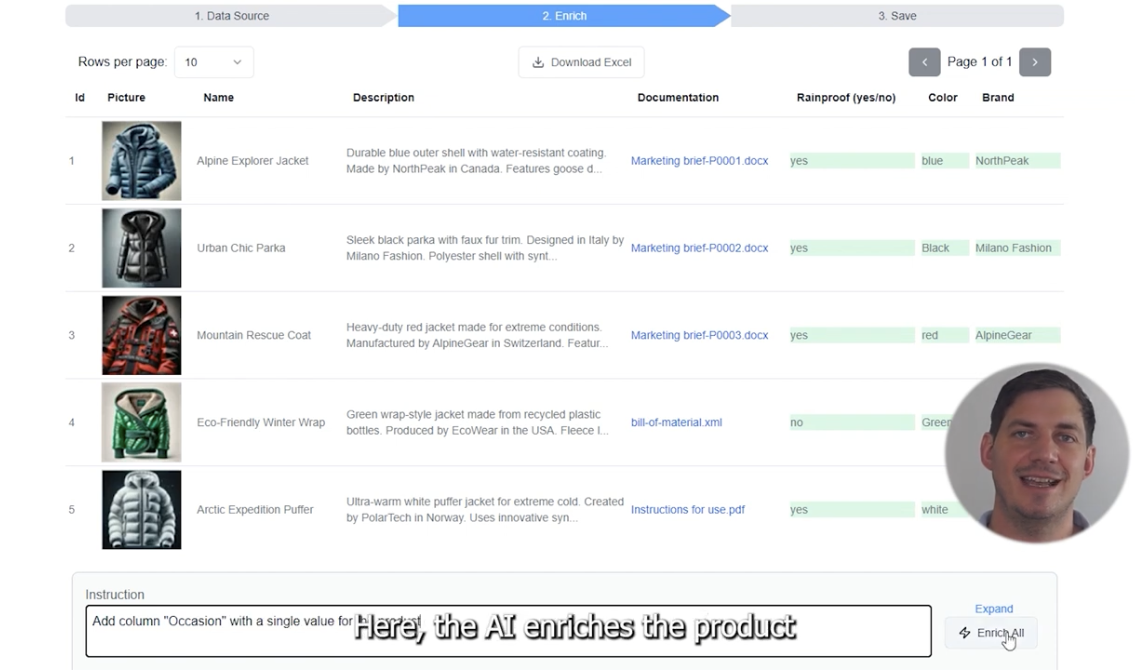The Strategic Challenge
💡 Strategic Prompt
"Most digital transformation initiatives fail because organizations rush to build customer-facing portals without first establishing the data foundation that will power them. How do you create a B2B commerce platform that scales when your product data is scattered across spreadsheets, legacy systems, and tribal knowledge?"
Digital transformation in commerce isn't about technology—it's about data. Every successful B2B portal, marketplace presence, and omnichannel strategy depends on one critical foundation: comprehensive, accurate, and accessible product data.
This analysis explores how organizations can approach digital transformation through a data-first methodology, establishing master data foundations that enable rather than constrain future commerce capabilities.
The Data-First Digital Transformation Framework
Why Traditional Approaches Fail
Organizations typically approach digital transformation by selecting platforms first, then attempting to force their data into predetermined structures. This backwards approach leads to:
- Compromised user experiences due to incomplete product information
- Expensive custom development to work around data limitations
- Multiple data silos that become increasingly difficult to synchronize
- Inability to scale beyond initial use cases
The Master Data Foundation
A data-first approach begins with understanding your product information requirements across all intended channels and touchpoints. This foundation includes:
- Data Model Design: Flexible schemas that support current and future business needs
- Data Quality Standards: Completeness, accuracy, and consistency requirements
- Integration Architecture: How product data flows between systems
- Governance Processes: Who owns, maintains, and approves product information
B2B Portal Development: Building on Data Excellence
The Progressive Enhancement Approach
Rather than attempting to build a comprehensive B2B portal immediately, successful organizations follow a progressive enhancement strategy:
Phase 1: Data Foundation
Establish master product data with complete attribute sets, digital assets, and relationship modeling. This phase provides immediate value through improved internal processes while preparing for external applications.
Phase 2: API-First Architecture
Develop robust APIs that expose product data in formats optimized for digital consumption. This enables rapid prototyping and testing of customer-facing applications.
Phase 3: Minimum Viable Portal
Launch with core functionality (product catalog, basic ordering) powered by the comprehensive data foundation. Focus on user experience rather than feature completeness.
Phase 4: Advanced Capabilities
Add sophisticated features like personalization, configurators, and integration with customer systems—all enabled by the robust data foundation established in Phase 1.
"I've seen too many organizations spend millions on portal development only to realize their data foundation can't support the user experience they promised. Start with the data. Everything else follows."
Explore proven approaches and real-world implementations that support data-first digital transformation.
Digital Transformation Implementation Roadmap
Months 1-3: Data Discovery & Architecture
- Audit existing product data sources and quality
- Design comprehensive data model supporting all planned channels
- Establish data governance framework and ownership
- Select master data management platform (PIM/MDM)
Months 4-6: Foundation Implementation
- Implement chosen PIM/MDM platform
- Migrate and cleanse existing product data
- Establish data quality monitoring and improvement processes
- Develop initial API layer for data access
Months 7-9: Portal Development
- Build minimum viable B2B portal leveraging established APIs
- Implement core functionality: catalog browsing, search, basic ordering
- Conduct user testing and gather feedback
- Integrate with existing business systems (ERP, CRM)
Months 10-12: Enhancement & Scale
- Add advanced portal features based on user feedback
- Implement personalization and customer-specific pricing
- Expand to additional channels (mobile app, marketplace presence)
- Measure and optimize conversion rates and user experience



